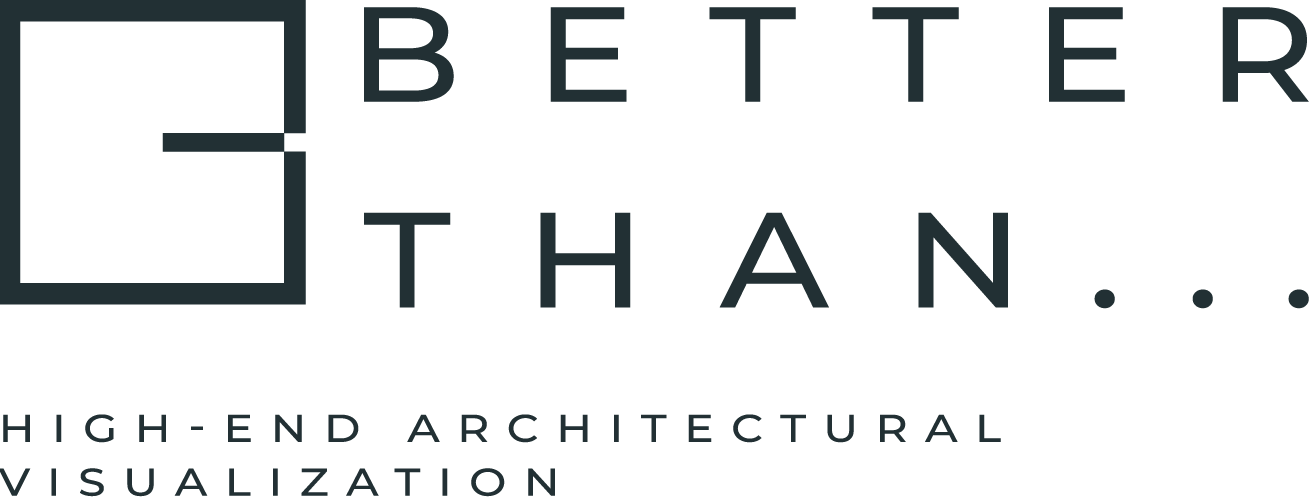Why Marketers Should Use Product Rendering for furniture?
Product rendering is the process of creating an accurate virtual 3D model of a product before it is manufactured. Also called 3D rendering furniture or 3D modelling, renders help you understand a product’s design, structure, and other minute details.
This way, any kinks can be worked out beforehand instead of after production has already begun.Product rendering is the process of creating three-dimensional images of products that look and feel like they would in real life. This technique uses computer-generated imagery (CGI) to create photorealistic product images that help audiences understand how a product will look in reality. Product rendering has multiple benefits not just for marketers, but also for other businesses such as architectural firms, production houses, etc.
This way, any kinks can be worked out beforehand instead of after production has already begun.Product rendering is the process of creating three-dimensional images of products that look and feel like they would in real life. This technique uses computer-generated imagery (CGI) to create photorealistic product images that help audiences understand how a product will look in reality. Product rendering has multiple benefits not just for marketers, but also for other businesses such as architectural firms, production houses, etc.
One of the advantages of this technique is that it allows you to create realistic and beautiful images that will attract more customers. It can be used by marketers to advertise their products and services, though the process may be complex. However, many find that the results are worth the effort involved.
Businesses have used product renderings in marketing campaigns for years, but as rendering technology improves, so does access to these services. Here are some of the advantages of using product renderings:
Businesses have used product renderings in marketing campaigns for years, but as rendering technology improves, so does access to these services. Here are some of the advantages of using product renderings:

With 3D rendering furniture, marketers have the power to make the impossible, possible. Just like 3D rendering itself provides complete control over a digital item, images that have been rendered through this process are accurate and lifelike representations that can be used for any purpose.
This cannot be said of photography in general, and it becomes increasingly difficult when trying to photograph items such as furniture, machinery, or medical gadgets.
This cannot be said of photography in general, and it becomes increasingly difficult when trying to photograph items such as furniture, machinery, or medical gadgets.
Product rendering is a powerful marketing tool because it allows customers to visualize what they are buying, creates an emotional connection with the product, and saves time for marketers.
Customers are more likely to remember and recognize a company when they see the company's work product on social media or a website.
By displaying three-dimensional models of their products, businesses can better market their wares to potential customers online. This is an effective technique for e-commerce sites and retailers alike.
By displaying three-dimensional models of their products, businesses can better market their wares to potential customers online. This is an effective technique for e-commerce sites and retailers alike.

Not only is 3D rendering more accurate than photography, but it's also more flexible and affordable. You'll quickly see a return on your investment because it's easy to update and repurpose 3D photos. With just a few clicks, you can modify 3D renderings to make adjustments to photos in the future without having to spend money on expensive rebuilds.
What is 3D rendering furniture, and how does it work?
3D rendering is the process of creating a 2-dimensional image of a 3-dimensional object. This image can be displayed on a screen or other flat surface. The process has two parts: geometry and lighting. Geometry defines the shape of the object while light defines how it appears to viewers.
3D rendering can be used for both computer graphics and marketing purposes.Marketing is always changing, and one of the newest additions is 3D rendering. With a number of potential uses - product visualisation, architectural walkthroughs, video games and more - it's no wonder this tool has become so popular in such a short period of time.
3D rendering can be used for both computer graphics and marketing purposes.Marketing is always changing, and one of the newest additions is 3D rendering. With a number of potential uses - product visualisation, architectural walkthroughs, video games and more - it's no wonder this tool has become so popular in such a short period of time.
Three-dimensional rendering furniture has been a standard in marketing for over ten years, first used in the early 1990s. It's still constantly evolving and is commonly used to create accurate images of products or services that have yet to be constructed; these include architectural renderings, interior design renderings, and product renderings.
The Nike+iPod campaign in 2005 was one of the first major examples where companies created an interactive experience for users. This lets them see themselves running on a treadmill or TV screen in front of them as they are working out.
The Nike+iPod campaign in 2005 was one of the first major examples where companies created an interactive experience for users. This lets them see themselves running on a treadmill or TV screen in front of them as they are working out.

The artists create 3D wireframe models using data from an engineering file or product specifications. They use a rendering engine, such as Redshift, to display the 3D models.
Three-dimensional images are made using information from three-dimensional models by using rendering software. This software can create graphics that look extremely realistic and detailed. There are now no limits to what you can do with edited images- your options are only as constrained by your own creativity. Whether it's transforming the environment or manipulating lighting and color, the world is yours to change.
3D rendered images don't have any glares, dim lighting, or manufacturing flaws. They're also photorealistic and accurate. In fact, it can be challenging to tell the difference between a 3D image and an actual photo.
Three-dimensional images are made using information from three-dimensional models by using rendering software. This software can create graphics that look extremely realistic and detailed. There are now no limits to what you can do with edited images- your options are only as constrained by your own creativity. Whether it's transforming the environment or manipulating lighting and color, the world is yours to change.
3D rendered images don't have any glares, dim lighting, or manufacturing flaws. They're also photorealistic and accurate. In fact, it can be challenging to tell the difference between a 3D image and an actual photo.
The history of product rendering
By creating realistic images of a product, marketers can show potential customers the features and benefits of said product. This technique is called product rendering, and it gives people an accurate idea of what the final result will look like.
Product rendering is the perfect way to show off any product, from at-home gadgets to automobiles. This tried and true method has been around for years, continuing to grow and change with developing technology.
The first 3D rendering program, Sketchpad, was created by Ivan Sutherland in the early 1970s.
Product rendering is the perfect way to show off any product, from at-home gadgets to automobiles. This tried and true method has been around for years, continuing to grow and change with developing technology.
The first 3D rendering program, Sketchpad, was created by Ivan Sutherland in the early 1970s.
Sketchpad was a groundbreaking software that allowed users to create simple 3D shapes, like cubes or prisms. This went on to become the computer-generated visualisations we use today.
Moreover, Edwin Catmull, one of Sutherland's students, not long after the development of Sketchpad creates the first realistic 3D animated model that uses z-buffering. One of the earliest examples of using CGI in animation was his student film "A Computer Animated Hand" from 1972.
Moreover, Edwin Catmull, one of Sutherland's students, not long after the development of Sketchpad creates the first realistic 3D animated model that uses z-buffering. One of the earliest examples of using CGI in animation was his student film "A Computer Animated Hand" from 1972.

Product rendering in marketing originated in the late 1800s with Charles Mott. In 1877, he became the first person to create a rendered image by taking advantage of photography as a new invention. As a result, he generated an advertisement for his company that sold lamps and chandeliers.
In the early 1900s, before photography became commonplace, many companies used hand-drawn or painted advertisements. These ads were often highly realistic and allowed customers to see what they would be buying.
In the early 1900s, before photography became commonplace, many companies used hand-drawn or painted advertisements. These ads were often highly realistic and allowed customers to see what they would be buying.
The first time a product render was used on record was in the 1940s when General Motors paid artists to create illustrations of their new car models. These illustrations were then mailed out as postcards, brochures, and ads in magazines.
The commercial they produced was an animated Chevrolet car model. The animation for this project was done by John Hubley, who had worked on Disney's "Snow White and the Seven Dwarfs" in the past.
General Motors made the switch to photos over drawings in the 1960s because they were more budget-friendly and simple to create.Pixar Animation Studios was the first company to use 3D rendering for animated furniture in their film “Toy Story.”
The commercial they produced was an animated Chevrolet car model. The animation for this project was done by John Hubley, who had worked on Disney's "Snow White and the Seven Dwarfs" in the past.
General Motors made the switch to photos over drawings in the 1960s because they were more budget-friendly and simple to create.Pixar Animation Studios was the first company to use 3D rendering for animated furniture in their film “Toy Story.”
There are many reasons why product rendering is advantageous for marketing purposes.
The main issue that hardware marketers face is how to communicate the value, purpose, and differentiators of their product to customers. When starting a business, most have a tight budget for marketing which makes this task even more difficult.

Customers have shorter attention spans and more choices available to them than in the past, so companies must work harder to interest them. By using 3D furniture rendering in marketing materials, businesses can better communicate a product's value proposition and vision.
Marketing professionals can use 3D rendering to create high-fidelity images of products that customers can visualize in ways traditional photography cannot. With 3D renderings, marketing professionals can demonstrate a product and its features from various perspectives in simulated locations quickly and easily, which enables customers to make decisions more efficiently.
Marketing professionals can use 3D rendering to create high-fidelity images of products that customers can visualize in ways traditional photography cannot. With 3D renderings, marketing professionals can demonstrate a product and its features from various perspectives in simulated locations quickly and easily, which enables customers to make decisions more efficiently.
Product rendering provides significant advantages for marketers, which include:
Can be Used in Multiple Situations
Some tasks are only possible through specific means. For example, perhaps you need your product to come in 30 different colors and styles, or be at the bottom of a swimming pool or on top of a mountain.
With 3D rendering, you can create furniture without traveling to an inaccessible site or spending all day photographing the same item multiple times. Plus, if you want to change the lighting or mind later, no problem –– there's no need to schedule another photo shoot.
With 3D rendering, you can create furniture without traveling to an inaccessible site or spending all day photographing the same item multiple times. Plus, if you want to change the lighting or mind later, no problem –– there's no need to schedule another photo shoot.
The 3D assets we create can be used for a number of different marketing channels, such as billboards, trade exhibitions, newspaper advertisements, and product packaging. By using photorealistic rendering, you can tailor advertising campaigns to specific target populations.
Providing customers with a range of advertisement choices, like different colors or diverse lifestyles images, allows everyone to find an option they're happy with.
3D technology not only allows for the creation of pullout images that reveal a product's interior components and quality, but also provides a variety of visual aids to clients. These tools will help draw attention to the products while simultaneously highlighting all their features and options. Because 3D renderings are timeless, they are a wise investment.
3D technology not only allows for the creation of pullout images that reveal a product's interior components and quality, but also provides a variety of visual aids to clients. These tools will help draw attention to the products while simultaneously highlighting all their features and options. Because 3D renderings are timeless, they are a wise investment.

Inexpensive
Three-dimensional furniture rendering has a much more powerful impact than regular photography! Three-dimensional product rendering is often cheaper than photography, especially when you need to introduce prototypes or seasonal clothing lines. You have to manufacture the product, ship it to another location, and then adjust your schedule for a photo shoot.
On top of the extra hassle, expenses associated with find a photographer and rent space can really add up. If you use only product photography to market your new products or line, you'll need to make back that money somehow.
While it is easier to create a furniture 3D model than an actual piece of furniture, photography can be used to produce realistic images.
On top of the extra hassle, expenses associated with find a photographer and rent space can really add up. If you use only product photography to market your new products or line, you'll need to make back that money somehow.
While it is easier to create a furniture 3D model than an actual piece of furniture, photography can be used to produce realistic images.
3D Product Rendering is a computer-generated image of your product that allows you to see what it would look like and how it might function, without ever having to physically create the product. This means that if something changes based on client feedback, you can easily update the design, which would be much harder to do with a genuine product.
Precision
Because images are generated from 3D models, it is easy to make slight changes while still preserving the natural look. Marketers who use 3D rendering to showcase furniture can create highly accurate images, including details that would be impossible to capture with photography, like individual water droplets on a cola can. This level of accuracy makes it possible to highlight product attributes or show how a piece of furniture might fit into a space.
With 3D renderings, you can take precise measurements even while the rendering is still being done. This is opposed to digital photos which do not provide accurate 3D distance information. With a three-dimensional rendering, you also have control over both indoor and outdoor lighting.
With 3D rendering furniture, you don't need to rely on good weather or the perfect sunset to get a clear shot of your landscape. You can control everything in the scene including when it is set and how bright the sun shines.
Flawless, accurate assets can be yours by using 3D product rendering.
With 3D rendering furniture, you don't need to rely on good weather or the perfect sunset to get a clear shot of your landscape. You can control everything in the scene including when it is set and how bright the sun shines.
Flawless, accurate assets can be yours by using 3D product rendering.

Eco-friendly
By using 3D rendering furniture, marketers can create beautiful pictures that display products in their natural environments. This enables compositing without the need to build multiple photo shoot locations. Customers can picture the goods in their minds while considering the setting and intended application.
Not only does photography incur many environmental costs, but it also creates a lot of waste. Consider how often sets are used- they take up a lot of space and are typically only used once before being thrown away.
On the contrary, photorealistic 3D rendering furniture doesn't use up physical resources. Rather, it's a waste-free and more environmentally friendly option than building and then breaking down photo sets.
Not only does photography incur many environmental costs, but it also creates a lot of waste. Consider how often sets are used- they take up a lot of space and are typically only used once before being thrown away.
On the contrary, photorealistic 3D rendering furniture doesn't use up physical resources. Rather, it's a waste-free and more environmentally friendly option than building and then breaking down photo sets.
Quick Turnaround Time
Product image rendering with CGI takes significantly less time than traditional photography methods. A marketer won't have to waste time and money applying for venues, hiring a photographer, and prototyping when they use rigging instead. All that's needed is to hire some skilled 3D artists to replicate the product desired, then texture it accordingly before placing it in the selected setting.
Not only does this save marketers time, but it also provides them with a dependable source for product photos that can churn out a high volume of quality images in a limited timeframe. Advertising professionals can place an order for the bulk amount of photographs needed for their online store all at once and receive them as promised.
Not only does this save marketers time, but it also provides them with a dependable source for product photos that can churn out a high volume of quality images in a limited timeframe. Advertising professionals can place an order for the bulk amount of photographs needed for their online store all at once and receive them as promised.
Achieving what others deem impossible
3D rendering furniture allows you to build things that would be otherwise impossible, whether it's an environment or other items. When shooting pictures, there's no need to spend time and money assembling difficult sets.
With 3D rendering furniture, marketers can have any background or landscape possible without spending a fortune. A product could be displayed underwater, on top of a mountain, or really anywhere else one might imagine. It will look interesting and credible to customers, so they won't be able to ignore it.
With 3D rendering furniture, marketers can have any background or landscape possible without spending a fortune. A product could be displayed underwater, on top of a mountain, or really anywhere else one might imagine. It will look interesting and credible to customers, so they won't be able to ignore it.
How To Market Your Business Without A Physical Product

Because prototypes can take time and be costly to develop, marketing a new product right away might not be possible after you create engineering files and send them to the manufacturer. What if the factory makes changes at the last minute? If those alterations don't arrive on time, you might have to wait weeks for a new prototype. And, of course, you'll still need to organize a photo shoot once everything is finalized.
Before sending your files to a manufacturer, explore the idea of having graphic marketing materials that can be created with 3D product rendering. This 'pre-prototype' will allow you to promote and test your new product without a physical version.
Using Product 360, you have the power to change lighting, find multiple perspectives, and accentuate desired product features-- all before a single item has been made.
Using Product 360, you have the power to change lighting, find multiple perspectives, and accentuate desired product features-- all before a single item has been made.
Advertisements that engage the user
In today's market, customers want to be able to experience products interactively without leaving their homes. They still want to be able to examine items thoroughly and understand how they can use them. In light of this, marketers may be confident that utilising 360-degree views and other interactive 3D models will satisfy customers’ needs, leading to an increase in online sales.
Customers can see a product from every angle with 360-degree views, for example. This allows them to verify that the product has everything they are looking for before making a purchase.
Customers can see a product from every angle with 360-degree views, for example. This allows them to verify that the product has everything they are looking for before making a purchase.
Conclusion
3D rendering provides a level of Magnum opus that is otherwise unattainable through standard photography due to its numerous potential applications and evergreen qualities. Even the technology for Virtual Reality and Augmented Reality is 3D rendering.Many experts are predicting that the market for virtual and augmented reality technology will grow to $150 billion by 2020.
There is no better way to gain control over your digital assets than by using 3D rendering. With its cost-efficiency, durability, and adaptability, it provides marketers with the best return on investment possible.
The visuals and animations will have a lasting effect on your audience, helping you to grow and keep them. The advertising industry will be increasingly controlled by 3D modeling and rendering.
There is no better way to gain control over your digital assets than by using 3D rendering. With its cost-efficiency, durability, and adaptability, it provides marketers with the best return on investment possible.
The visuals and animations will have a lasting effect on your audience, helping you to grow and keep them. The advertising industry will be increasingly controlled by 3D modeling and rendering.

